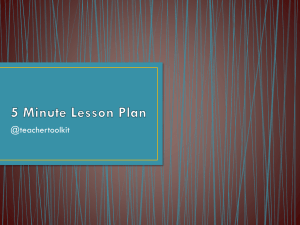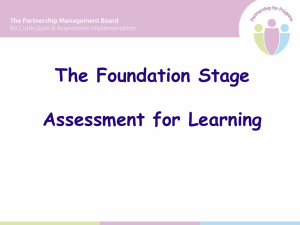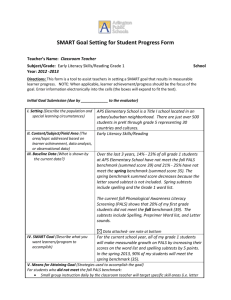Supporting Teachers New and `Old` to Psychology
advertisement
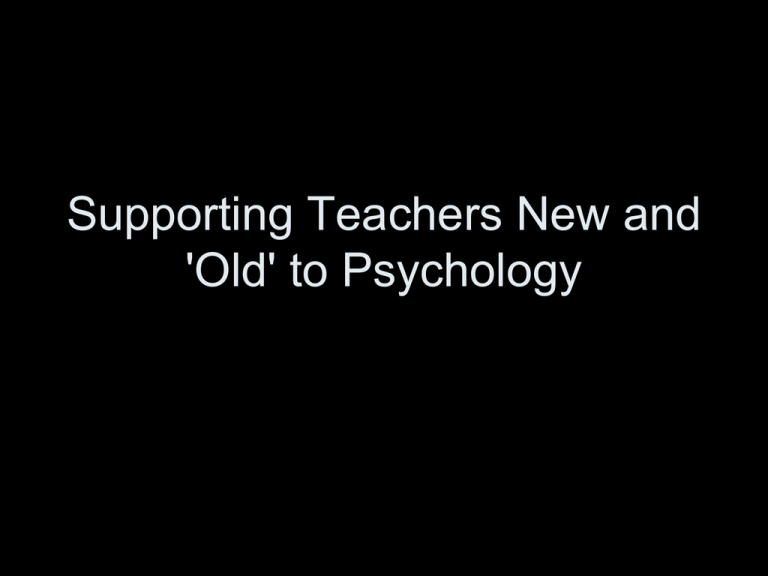
Supporting Teachers New and 'Old' to Psychology Objectives • By the end of the session you will be able to: • Understand how to use active teaching and learning strategies • Understand how the strategies demonstrate impact on the learning of students • See how to use AfL to teach an outstanding psychology lesson • See how you can support or be supported Active learning strategies • What are they? • Why do them? • Metacognitive benefits • Some examples- PALS, think-pair-share, jigsaw Why active learning? • Students who are taught using active learning develop better higher level thinking skills than those who are taught using only lecture based instruction. • Richmond & Kindelberger Hagan (2011) PALS • Lin Norton – Professor Emeritus Liverpool Hope University • Psychology Applied Learning Scenarios (PALS) are an adaptation of problembased learning using hypothetical case studies that represent situations which professional psychologists typically face. PALS Problem-based learning represents a shift away from more traditional teaching methods to a perspective that focuses on students’ learning. (Boud & Feletti 1999). What is the pedagogical justification for the use of PALS? • • • • Active learning Metacognition Constructive alignment Constructivist learning PALS • Problem based learning such as PALS, encourages students to think deeply about information and to develop a shared knowledge through the presentation of each student’s perspective (Guenther and Miller 2011). PALS • PALS provide students with the scope to apply their own knowledge to a contextualised problem (Norton 2004) • They make reflective judgements leading to an in-depth understanding of psychology can be applied to real life PALS activity • http://www.youtube.com/watch?v=co7BW WoF-5I • • • • Where’s the psychology – discuss How could you tackle this? How will you answer the question? How would you know when you have answered the question? Jigsaw technique • Jigsaw technique involves each student being given a unique and vital part of information that must be put together within a collaborative group for any of the students to understand the whole story. • (Perkins and Tagler 2011) Jigsaw technique • • • • • Aims Procedure Findings Conclusions Criticisms • Each person has sheet 1, 2 or 3 with details of the Dement and Kleitman study • Expert, discuss, teach Jigsaw technique • You have two minutes to read and become ‘expert’ in your area of the study • You now have one minute to discuss and rehearse the material with the person who has the same topic area • You have a further three minutes to teach the others in the group the information in which you have become an ‘expert’. Jigsaw technique • This means that the student takes the role of the ‘‘expert’’ rather than the teacher • They must add to the group’s learning • The teacher becomes an assistant to the students’ understanding, evaluation, and synthesis of material Jigsaw technique • Student engagement required for jigsaw tasks has been shown to play an important role in the acquisition of critical thinking skills and the development of problem solving skills Jigsaw technique benefits • Cooperative learning promotes • • • • Meta-cognitive thought A willingness to take on difficult tasks Persistence in working on task and Transfer of learning from one task to another through social construction Think-Pair-Share • Using AfL to plan an outstanding lesson • Use of Think-Pair-Share • Get a copy at • David Weston @informed_edu49s AfL • AfL clarifies learning objectives • involves self and peer-assessment • questioning and • feedback AfL • Learning goals – students need to know there are learning objectives and are clear about what they are trying to learn • Should include what a good learning outcome will ‘look like’ and how this relates to subject standards. AfL • Lessons must be planned to meet learning objectives and appropriate tasks then identified. • If formative assessment is to be effective therefore, it would imply that assessment incidents also need to be planned AfL • Assessment incidents should be focused on small group tasks • Provide evidence of student’s progress to date and • Scaffold the learning of the group as they collaborate to complete the activity AfL • Is constructive alignment achieved? • To maintain student focus, the teacher should relate the tasks to the learning objectives and outcomes throughout the lesson. AfL • Tasks provide opportunities for learner self-assessment and peer-review • Teacher assessment is enhanced by the use of questions to provoke thinking. • Questioning is planned, targeted and progressive • Extend ‘wait time’ AfL • Feedback • Are your students only interested in grades? • Do you believe that your feedback is more useful than the students do? • Does your feedback match learning criteria and challenge improvement? Mentoring • Think-pair-share • What is the most useful way of supporting a teacher? • What makes a good teacher mentor? OFSTED good mentoring • Emphasis on class management • Phased programme to support teaching and assessment • Observations, feedback and guidance • Regular meetings • Opportunities given to experience good practice • Be a critical friend

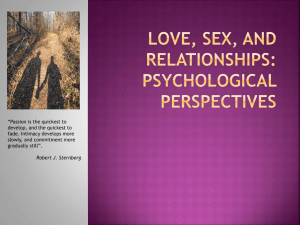


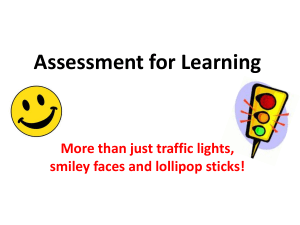
![afl_mat[1]](http://s2.studylib.net/store/data/005387843_1-8371eaaba182de7da429cb4369cd28fc-300x300.png)
